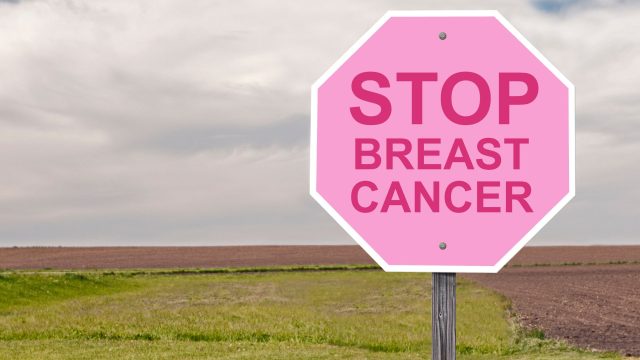24
Oct
Advocates Urge Elimination of Toxic Pesticide Use to Prevent Breast Cancer

(Beyond Pesticides, October 24, 2022) We need prevention of the causes of breast cancer, not just awareness. In 1985, Imperial Chemical Industries and the American Cancer Society declared October “Breast Cancer Awareness Month” as part of a campaign to promote mammograms for the early detection of breast cancer. Unfortunately, most of us are all too aware of breast cancer. Detection and treatment of cancers do not solve the problem.
Next to skin cancer, breast cancer is the most common cancer among women, causing the second most cancer-related deaths in the United States. Genetic factors only play a minor role in breast cancer incidence, while exposure to external environmental factors such as pesticides plays a more notable role. For breast cancer, one in eight women will receive a diagnosis, and genetics can only account for five to ten percent of cases. Therefore, it is essential to understand how environmental exposure to chemicals like pesticides can drive breast cancer development. Several studies and reports, including U.S. Environmental Protection Agency (EPA) data, identify hundreds of chemicals as influential factors associated with breast cancer risk.
Most types of breast cancers are hormonally responsive and are thus affected by estrogen or progesterone or other chemicals that mimic them, known as endocrine disruptors. Endocrine-disrupting chemicals include pesticides like DDT, organophosphate (OP) insecticides, glyphosate, neonicotinoids, and synthetic pyrethroids, as well as dioxins, PCBs, various solvents, and many other chemicals.
We must mitigate the multigenerational impacts pesticides pose on human and animal health. Adopting regenerative organic practices and using least-toxic pest control can eliminate harmful exposure to pesticides. Solutions like buying, growing, and supporting organic can also help eliminate the extensive use of pesticides in the environment.
In addition to these personal actions, public policy must be changed.
Letter to EPA:
In 1985, Imperial Chemical Industries and the American Cancer Society declared October “Breast Cancer Awareness Month” as part of a campaign to promote mammograms for the early detection of breast cancer. Unfortunately, most of us are all too aware of breast cancer. Detection and treatment of cancers do not solve the problem. We need prevention of the causes of breast cancer, not just awareness.
Next to skin cancer, breast cancer is the most common cancer among women, causing the second most cancer-related deaths in the United States. Genetic factors only play a minor role in breast cancer incidence, while exposure to external environmental factors such as pesticides plays a more notable role. For breast cancer, one in eight women will receive a diagnosis, and genetics can only account for five to ten percent of cases. Therefore, it is essential to understand how environmental exposure to chemicals like pesticides can drive breast cancer development. Several studies and reports, including U.S. Environmental Protection Agency data, identify hundreds of chemicals as influential factors associated with breast cancer risk.
Most types of breast cancers are hormonally responsive and are thus affected by estrogen or progesterone or other chemicals that mimic them, known as endocrine disruptors. Endocrine-disrupting chemicals include pesticides like DDT, organophosphate (OP) insecticides, glyphosate, neonicotinoids, and synthetic pyrethroids, as well as dioxins, PCBs, various solvents, and many other chemicals.
EPA’s examination of the endocrine-disrupting effects of pesticides has stalled. If we are to take action to prevent breast cancer, we must eliminate those pesticides. Organic production and land management need to become the standard against which EPA measures all pesticides.
Thank you.
Letter to U.S. Senators and Representative:
In 1985, Imperial Chemical Industries and the American Cancer Society declared October “Breast Cancer Awareness Month” as part of a campaign to promote mammograms for the early detection of breast cancer. Unfortunately, most of us are all too aware of breast cancer. Detection and treatment of cancers do not solve the problem. We need prevention of the causes of breast cancer, not just awareness.
Next to skin cancer, breast cancer is the most common cancer among women, causing the second most cancer-related deaths in the United States. Genetic factors only play a minor role in breast cancer incidence, while exposure to external environmental factors such as pesticides play a more notable role. For breast cancer, one in eight women will receive a diagnosis, and genetics can only account for five to ten percent of cases. Therefore, it is essential to understand how environmental exposure to chemicals like pesticides can drive breast cancer development. Several studies and reports, including U.S. Environmental Protection Agency (EPA) data, identify hundreds of chemicals as influential factors associated with breast cancer risk.
Most types of breast cancers are hormonally responsive and are thus affected by estrogen or progesterone or other chemicals that mimic them, known as endocrine disruptors. Endocrine-disrupting chemicals include pesticides like DDT, organophosphate (OP) insecticides, glyphosate, neonicotinoids, and synthetic pyrethroids, as well as dioxins, PCBs, various solvents, and many other chemicals.
EPA’s examination of the endocrine-disrupting effects of pesticides has stalled. If we are to take action to prevent breast cancer, we must eliminate those pesticides. Organic production and land management need to become the standard against which EPA measures all pesticides.
Please use your oversight responsibility to ensure that EPA takes steps to prevent breast cancer.
Thank you.










